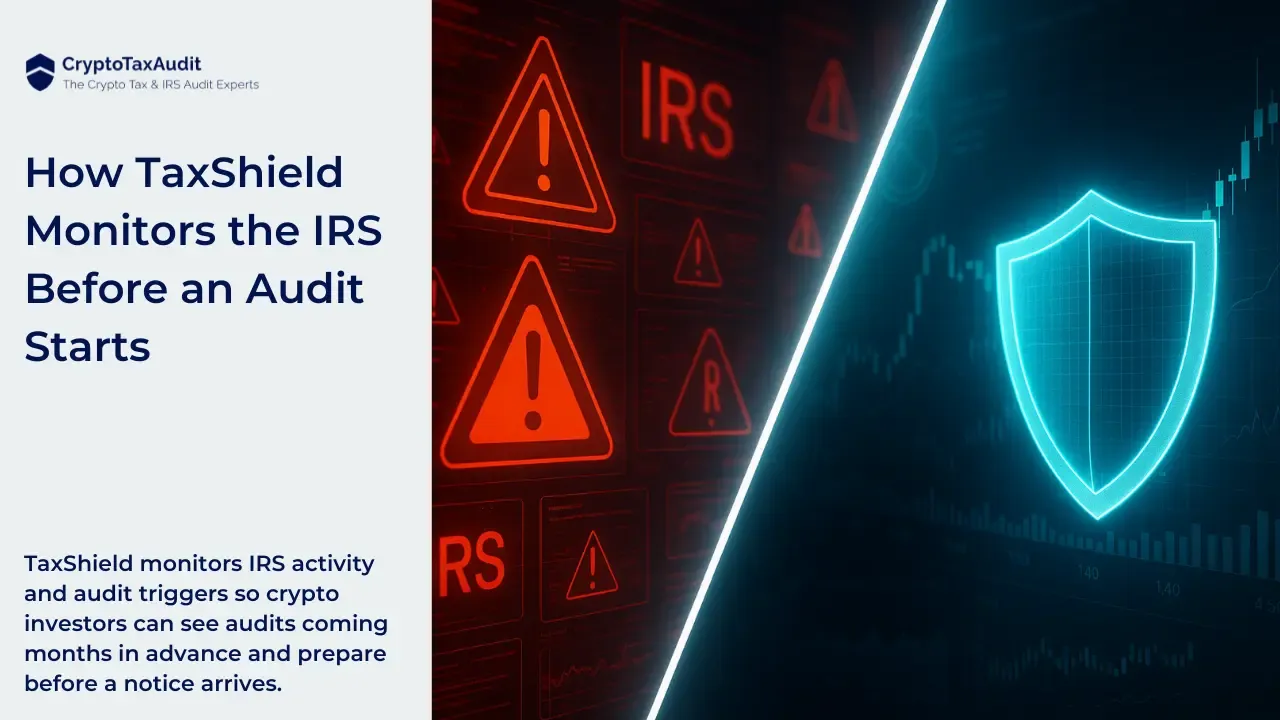
The 1099-DA Is Coming in 2026 — Here’s What Crypto Traders and Investors Need to Know Now
Key Takeaways:
-
The IRS is rolling out Form 1099-DA in 2026 to track crypto sales and cost basis.
-
All U.S. crypto traders must now use FIFO by wallet — a major shift from past strategies.
-
If your gain calculator isn’t 1099-DA compliant, your tax report and audit defense are at risk.
-
A Safe Harbor opt-in is available to protect you from retroactive penalties—but it’s not automatic.
Starting in January 2026, a new IRS form is going to blindside a lot of crypto traders—and no, it’s not a rumor.
It’s called the 1099-DA, and it’s the government’s latest attempt to tighten the screws on digital asset reporting.
Let’s break down what it means for you—and why ignoring it could cost you everything.
What Is the 1099-DA?
The 1099-DA is the IRS’s shiny new tool for tracking your crypto activity.
Exchanges like Coinbase, Kraken, Uphold, and Robinhood will be required to send this form to both the IRS and you, reporting how much you sold and, crucially, what they believe your cost basis was.
Sounds simple enough… until you realize how messy it gets when you move crypto between wallets, exchanges, or DeFi protocols.
Let’s say you bought Bitcoin on Coinbase, moved it to a hardware wallet, and then later sold it on Kraken.
The IRS might get a report from both exchanges—but the numbers won't add up without context.
Now imagine doing that across dozens of wallets and trades.
You can already see the problem.
FIFO, Wallet-by-Wallet, and the IRS Power Grab
Under the new rules starting in 2025, every crypto trader is required to use FIFO—First In, First Out—for their cost basis method..
The IRS also wants FIFO applied on a wallet-by-wallet basis.
That’s a major shift.
Up until now, many investors have legally used other strategies like LIFO or HIFO.
Some treated all wallets as one unified pool (sometimes called universal or single depot).
Those days are over.
If you aren’t calculating gains FIFO by wallet, you’re already on the IRS’s bad side. (This is pretty much all U.S. crypto investors doing tax reporting. Why? Only 4 of the online calc services even support by wallet calculations as of 1/1/2025 -- Cointracking, Koinly, CryptoTaxCalculator, and Cointracker. For none of them was this the default setting.)
Worse still, the IRS is trying to apply this standard retroactively, reaching all the way back to 2017 in one of our audit cases.
One of our clients saw a $2 million swing in their gain calculation because the IRS decided FIFO by wallet should’ve been used, even though it wasn’t required at the time!
Why the 1099-DA Will Create Confusion (and IRS Trouble)
Let’s say you’re an active trader.
You buy $10,000 of ETH, flip it for a $1 profit, and reinvest the same $10K every week.
At the end of the year, your 1099-DA could report $520,000 in gross proceeds.
That’s right—half a million dollars in “sales” on paper, even though your real gain was just $52.
Without airtight records, the IRS might assume your cost basis is zero.
That means you get taxed on the full $520K.
Good luck explaining that in an audit—especially if your gain calculation software can’t handle FIFO by account.
Most Gain Calculators Aren’t Ready
Only 4 out of the 8 major crypto tax software platforms currently support FIFO by account.
That’s a problem.
Most of these services were built during bull markets, and some are barely hanging on after years of low trading volume.
If your gain calculator can’t handle the new rules, the 1099-DA will wreck your tax report—and your audit defense.
Safe Harbor Relief Exists—But It’s Not Automatic
Because of the chaos, the IRS has offered a Safe Harbor transition plan.
It lets you make the switch to FIFO-by-wallet without retroactively blowing up your tax history.
But here’s the catch: You have to actively opt in.
If you don’t, the IRS might impose its new standard retroactively—and guess who benefits from that? (Hint: it’s not you.)
This Is Just the Beginning
The 1099-DA rollout is part of a broader IRS crackdown.
From aggressive letters to stealth audits and sweeping new regulations, the agency is quietly building the most sophisticated crypto enforcement framework we’ve ever seen.
The message is clear: If you’re trading crypto, your tax reporting better be bulletproof—because the IRS is gearing up to treat digital assets like any other asset class, with all the penalties and audit scrutiny that come with it.
Stay One Step Ahead of the IRS
At CryptoTaxAudit, we’re not just watching these changes—we’re actively defending clients impacted by them.
We’ve been in the trenches with real traders facing real IRS audits.
✅ Need help calculating FIFO by wallet?
✅ Unsure if your gain calculator is 1099-DA ready?
✅ Want to secure your position under the Safe Harbor plan?
We’ve got your back.
🚨 Get Ready for 2025 tax season
Sign up for more information about our Crypto Gain Calculation & IRS Defense Services at CryptoTaxAudit.com.
🎧 Prefer to listen instead of reading? Here’s a narrated explainer version of this post: Watch on YouTube
Frequently Asked Questions:
What is IRS Form 1099-DA?
1099-DA is a new IRS form launching in 2026 to report digital asset activity. Exchanges will report your crypto sales and cost basis directly to the IRS, whether the information is accurate or not.
Why is FIFO-by-wallet required now?
The IRS now requires FIFO (First In, First Out) to be applied on a wallet-by-wallet basis for crypto transactions. This replaces older methods like LIFO and universal pooling, and it's catching traders off guard.
Can I opt into a Safe Harbor plan?
Yes. The IRS allows a Safe Harbor plan to help you transition to FIFO-by-wallet without retroactive penalties — but only if you opt in and apply it correctly.
How is CryptoTaxAudit different from other crypto tax services?
Most platforms just generate a report — CryptoTaxAudit delivers audit-ready crypto gain calculations. Our team uses advanced tools and expert oversight to match trades across wallets, exchanges, and blockchains accurately. You’ll get verified results, IRS-ready documentation, and fixed pricing based on your trade volume. And unlike software-only services, we also defend you in an IRS audit.





